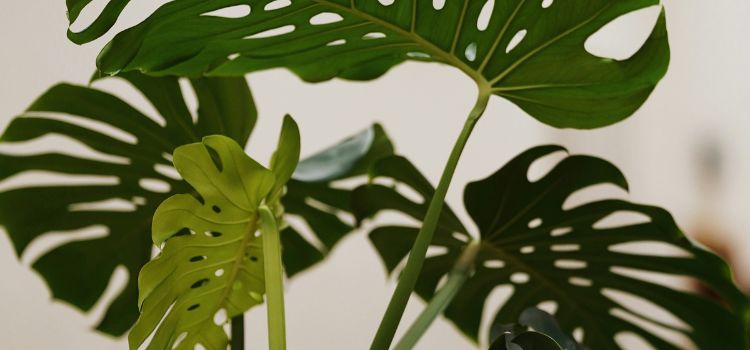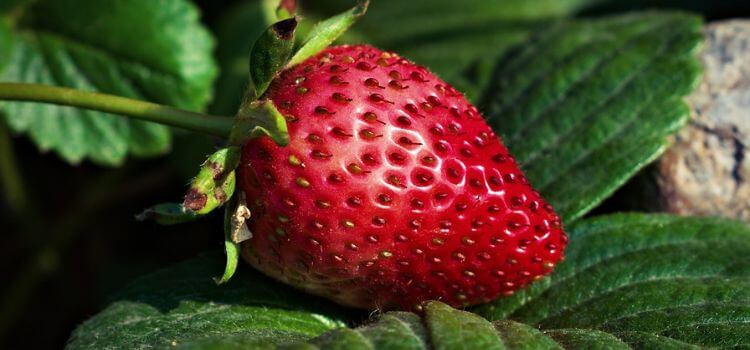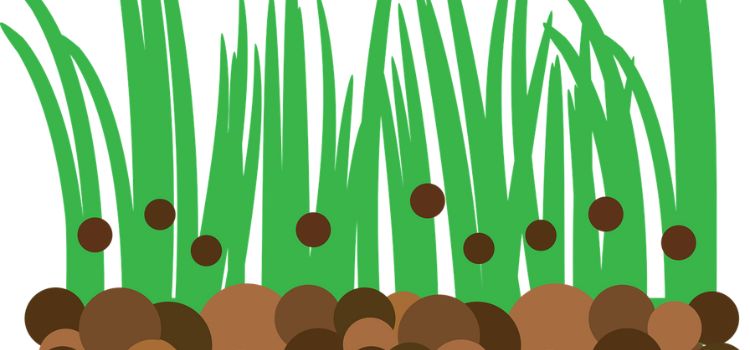As an Amazon Associate, I earn from qualifying purchases.
Plants that look like Monstera include the Split-leaf Philodendron and the Rhaphidophora Tetrasperma, which share similar leaf shapes and patterns.
Monstera plants are famous for their distinctive, perforated leaves. They add a tropical vibe to any space. Split-leaf Philodendron, also known as Philodendron Bipinnatifidum, features similar split leaves. Rhaphidophora Tetrasperma, often called Mini Monstera, mimics Monstera’s iconic look but with smaller leaves.
These alternatives are ideal for those seeking Monstera-like aesthetics. They are more accessible to care for and often more affordable. Choosing these plants can bring the same lush, green appeal to your home. They thrive in similar conditions, making them perfect Monstera substitutes.

What Is Monstera Plant?
The Monstera plant is famous for its large, split leaves. It is a tropical plant and loves warm, humid places. Many people adore it as a houseplant due to its unique look. It adds a touch of the jungle to any room.
Philodendron
Philodendron plants have heart-shaped leaves, similar to Monstera. Some types even have split leaves. Philodendrons are easy to care for and make great indoor plants. They enjoy indirect light and moist soil.
Rhaphidophora tetrasperma
Rhaphidophora tetrasperma is often called “Mini Monstera.” Like Monstera, it has small, split leaves. It proliferates and can climb if given support. This plant likes bright, indirect light and regular watering.
Swiss Cheese Plant
The Swiss Cheese Plant is another name for Monstera, but sometimes, people use it for other plants, too. These plants have holes in their leaves, making them look unique. They are also easy to grow indoors.
Epipremnum Pinnatum
Epipremnum Pinnatum has long, split leaves. It looks a lot like Monstera. This plant can grow very long and trail or climb. It prefers bright, indirect light and needs watering when the soil is dry.
Why Look For Plants Similar To Monstera?
Monstera plants are known for their big, beautiful leaves. Many people love the unique look of these plants. Sometimes, Monstera plants are hard to find or care for. Other plants can look just as stunning. These alternatives can be easier to find and take care of.
Philodendron bipinnatifidum
Philodendron Bipinnatifidum is one such plant. It has large, lush leaves like Monstera. The leaves are deeply lobed and very green. This plant is more accessible for indoors to grow. It needs less light than Monstera.
Swiss Cheese Plant
The Swiss Cheese Plant looks very similar to Monstera. Its leaves have holes, much like Monstera leaves. This plant is also known as Monstera Adansonii. It is smaller and easier to manage, perfect for homes with limited space.
Rhaphidophora tetrasperma
Rhaphidophora tetrasperma is often called the Mini Monstera. Its leaves look like tiny Monstera leaves. This plant proliferates and is very hardy. It needs similar care to Monstera but takes up less space.
Epipremnum Pinnatum
Epipremnum Pinnatum also has split leaves. It is sometimes called the Dragon Tail Plant. The leaves are long and narrow with splits. This plant is a great alternative. It is easy to grow and maintain.
Monstera Deliciosa
Monstera Deliciosa is the classic Monstera. It has large, fenestrated leaves. This plant is a bit more demanding. It needs more light and space. But it is a stunning addition to any home.
Top 5 Plants That Look Like Monstera
Monstera plants are famous for their beautiful leaves, which have unique holes and splits. But some plants look like Monstera and also have charming leaves. This blog will share the top five plants that look like Monstera.
Split Leaf Philodendron
The Split-Leaf Philodendron is a popular houseplant. Its large leaves have deep cuts that make it look like Monstera. This plant is easy to care for and grows well in bright, indirect light.
The leaves can grow up to 3 feet long. This makes the plant very attractive. Many people confuse it with Monstera. Here are some care tips for Split Leaf Philodendron:
- Water once a week.
- Keep in bright, indirect light.
- Use well-draining soil.
- Mist leaves to keep humidity high.
Swiss Cheese Plant
The Swiss Cheese Plant is another name for Monstera. But it can also refer to similar plants. This plant has leaves with holes, like Swiss cheese. These holes are called fenestrations. They help the plant get sunlight in the jungle.
This plant is easy to grow. It loves bright, indirect light. The leaves can get very big. They can be up to 2 feet wide. This makes the plant look stunning. Here are some tips to care for a Swiss Cheese Plant:
- Water when the top inch of soil is dry.
- Place in a spot with bright, indirect light.
- Use a moss pole for support.
- Mist leaves to increase humidity.
Fruit Salad Plant
The Fruit Salad Plant is also known as Monstera Deliciosa. It has large leaves with holes and splits. The name comes from its fruit. The fruit tastes like a mix of pineapple and banana.
This plant can grow very tall. It can reach up to 10 feet indoors. Its leaves can be over 3 feet long. Here are some care tips for the Fruit Salad Plant:
- Water when the soil is dry.
- Place in bright, indirect light.
- Support with a moss pole.
- Keep in a humid environment.
Window Leaf Plant
The Window Leaf Plant is another name for Monstera Adansonii. Its leaves have small, oval holes that look like windows, making the plant unique.
This plant is excellent for hanging baskets. It can also climb if you give it support. The leaves are smaller than Monstera Deliciosa. Here are some tips for caring for a Window Leaf Plant:
- Water when the soil is dry.
- Keep in bright, indirect light.
- Provide support to climb.
- Mist leaves to keep humidity high.
This mix ensures good drainage and aeration for the roots. Always use fresh soil when repotting to ensure the plant gets enough nutrients.
Borsigiana
The Borsigiana is a type of Monstera Deliciosa. It looks very similar. But it grows faster and has smaller leaves. The leaves still have splits and holes.
This plant is perfect for indoor spaces. It only needs a little room to grow. Here are some care tips for Borsigiana:
- Water when the soil is dry.
- Place in bright, indirect light.
- Support with a moss pole.
- Increase humidity by misting leaves.
How To Care For Monstera Look-alike Plants
Monstera plants have become popular indoor plants because of their stunning leaves. Many people love their unique look, but some might need the conditions to grow them. Thankfully, other plants look like Monstera. These Monstera look-alike plants are easier to care for and can thrive in different environments. This guide will help you understand how to care for Monstera look-alike plants.
Light Requirements
Monstera look-alike plants need the right amount of light to grow well. It’s essential to provide them with bright, indirect light. Direct sunlight can burn their leaves and cause damage.
Here are some tips for light requirements:
- Place the plant near a window with filtered light.
- Avoid direct sunlight for more than two hours a day.
- If the plant is in a dark room, use a grow light.
Some plants can also tolerate lower light conditions. In such cases, they might grow slower but will still be healthy. Light is a crucial factor for their well-being.
Watering Needs
Watering Monstera look-alike plants is essential for their growth. Too much water can cause root rot, while too little can make the plant dry and weak.
Follow these watering tips:
- Water the plant when the top 2 inches of soil are dry.
- Use a pot with drainage holes to prevent waterlogging.
- Reduce watering during the winter months.
It’s better to under-water than over-water these plants. Always check the soil moisture before watering again.
Soil Requirements
Monstera look-alike plants need well-draining soil to thrive. The right soil mix helps prevent root rot and provides nutrients for the plant.
Here is a simple soil mix recipe:
- One part is potting soil.
- One part perlite or pumice.
- One part orchid bark or coco coir.
Temperature And Humidity Requirements
Monstera look-alike plants prefer warm temperatures and high humidity. Keeping the right conditions helps them grow healthy and strong.
Ideal temperature and humidity ranges are:
| Condition | Range |
|---|---|
| Temperature | 65-80°F (18-27°C) |
| Humidity | 60-70% |
Use a humidifier or place a water tray near the plant to maintain humidity. Misting the leaves can also help but avoid overdoing it.
Fertilization Needs
Fertilizing Monstera look-alike plants is essential for their growth and health. They need nutrients to produce beautiful leaves and strong roots.
Here are some fertilization tips:
- Use a balanced liquid fertilizer every month during the growing season.
- Reduce fertilization in the winter months.
- Always follow the instructions on the fertilizer package.
Over-fertilizing can harm the plant, so be cautious. A little goes a long way in keeping these plants healthy and vibrant.
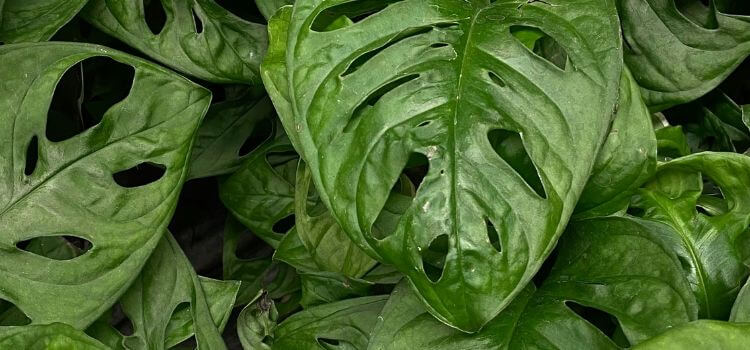
Common Problems Faced While Growing Monstera Look-alike Plants
Plants that look like Monstera are often sought after for their stunning aesthetic appeal. These plants can be a beautiful addition to any indoor or outdoor space. Yet, growing Monstera look-alike plants can present several challenges. Common problems faced while growing these plants include pest infestations, diseases, yellowing or browning of leaves, and stunted growth. Understanding these issues can help you maintain the health and beauty of your plants.
Pest Infestations
Pest infestations are a frequent issue for Monstera look-alike plants. Common pests include spider mites, aphids, and mealybugs. These pests can cause significant damage to the leaves and stems. Signs of infestation include tiny holes, sticky residue, and visible insects on the plant. Here are some tips to manage pest infestations:
- Regularly inspect your plants for signs of pests.
- Use insecticidal soap to treat affected areas.
- Isolate infested plants to prevent spreading.
- Wipe leaves with a damp cloth to remove pests.
Consistent monitoring and immediate action are crucial to controlling pest infestations. Healthy plants are less likely to attract pests.
Diseases
The disease can also affect Monstera look-alike plants. Fungal infections and bacterial diseases are the most common. Symptoms often include dark spots, mould growth, and wilting leaves. Here are some ways to prevent and treat plant diseases:
- Ensure proper air circulation around your plants.
- Avoid overwatering to prevent root rot.
- Use a fungicide if you see signs of fungal infection.
- Remove affected leaves to stop the spread of disease.
Maintaining a clean environment for your plants can reduce the risk of disease. Always use clean tools when pruning or repotting.
Yellowing Or Browning Of Leaves
Yellowing or browning of leaves is a common issue for Monstera look-alike plants. Several factors, such as overwatering, underwatering, or nutrient deficiencies can cause this. Here’s how to address these problems:
| Cause | Solution |
|---|---|
| Overwatering | Reduce watering frequency and ensure proper drainage. |
| Underwatering | Increase watering but avoid waterlogging the soil. |
| Nutrient deficiency | Use a balanced fertilizer to provide necessary nutrients. |
Check the soil’s moisture level regularly and adjust your watering schedule accordingly. Balanced fertilization can help maintain healthy foliage.
Stunted Growth
Stunted growth is another problem faced by Monstera look-alike plant owners. This can be due to insufficient light, poor soil quality, or lack of nutrients. Here’s how to encourage healthy growth:
- Provide adequate sunlight but avoid direct, harsh sunlight.
- Use well-draining soil to prevent root issues.
- Fertilize regularly with a balanced plant food.
- Repot the plant if it outgrows its current pot.
By ensuring your plant has the right conditions, you’re not just promoting robust growth, but also providing it with a sense of security. Regular care and attention will result in a healthy, thriving plant, giving you the confidence that you’re doing everything right.
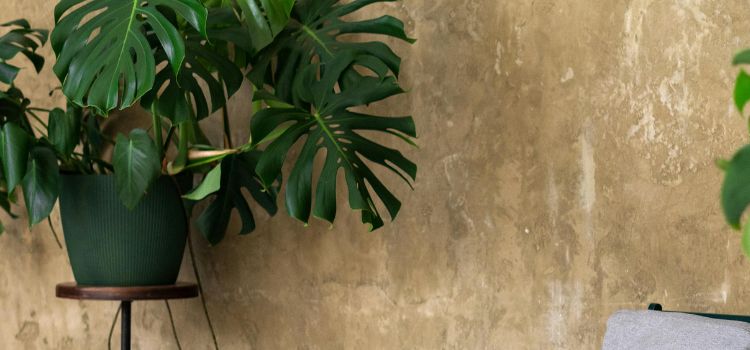
Frequently Asked Questions
Split-leaf Philodendron, specifically Philodendron bipinnatifidum, is often mistaken for Monstera due to their similar large, perforated leaves.
Examine the leaves to distinguish between a Monstera and a Philodendron. Monstera leaves typically have distinct, large holes and deep cuts, while Philodendron leaves are usually heart-shaped or elongated without holes. Check these features to identify your plant accurately.
A good substitute for Monstera is the Philodendron. Both plants share similar leaf patterns and care requirements, making the Philodendron an excellent alternative for indoor greenery.
Monstera and Rhaphidophora differ primarily in leaf shape and growth habits. Monsteras have larger, split leaves with more defined holes, while Rhaphidophora leaves are typically smaller with less fenestration. Monstera plants grow wider; Rhaphidophora tends to climb.
Conclusion
Exploring plants similar to Monstera opens up a world of lush, striking options for your indoor garden. Whether you opt for the elegant Philodendron or the dramatic Rhaphidophora, each brings a unique touch of greenery to your space. Remember, choosing the right plant can transform your home into a vibrant, leafy oasis.
Happy planting!
